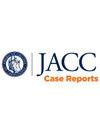Repair of Congenital Cardiac Disease Requiring Bypass for a Pediatric Patient With Paroxysmal Nocturnal Hemoglobinuria
Q4 Medicine
引用次数: 0
Abstract
Background
Paroxysmal nocturnal hemoglobinuria (PNH) is a life-threatening disease characterized by cytopenias, hemolysis, and thrombosis. There are only a handful of documented cases of cardiac bypass surgery performed on patients with PNH, none in the pediatric population.
Case Summary
A 16-year-old male adolescent presented with abdominal pain and fatigue, with laboratory studies revealing severe anemia, thrombocytopenia, and leukopenia. Based on flow cytometry, he was diagnosed with PNH. During cardiac screening prior to central line placement, he was incidentally found to have superior sinus venosus atrial septal defect with partial anomalous pulmonary venous return. The patient required surgical repair of the cardiac defect prior to PNH treatment with stem cell transplant.
Discussion
Cardiac surgery in patients with PNH requires careful multidisciplinary planning, including cardiology, cardiothoracic surgery, hematology, and infectious disease.
Take-Home Message
The presence of PNH alongside a cardiac defect in a pediatric patient highlights the complexity and challenges of performing cardiac bypass in this population.
阵发性夜间血红蛋白尿患儿先天性心脏病需要搭桥治疗的修复
背景:阵发性夜间血红蛋白尿(PNH)是一种以血细胞减少、溶血和血栓形成为特征的危及生命的疾病。只有少数记录在案的病例对PNH患者进行了心脏搭桥手术,在儿科人群中没有一例。16岁男性青少年表现为腹痛和疲劳,实验室检查显示严重贫血、血小板减少和白细胞减少。流式细胞术诊断为PNH。在中心静脉置管前的心脏筛查中,偶然发现他有上静脉窦房间隔缺损并部分肺静脉回流异常。患者在接受干细胞移植治疗PNH之前需要手术修复心脏缺陷。PNH患者的心脏手术需要仔细的多学科规划,包括心脏病学、心胸外科、血液学和传染病。儿科患者PNH伴心脏缺陷的存在凸显了在这一人群中进行心脏搭桥手术的复杂性和挑战。
本文章由计算机程序翻译,如有差异,请以英文原文为准。
求助全文
约1分钟内获得全文
求助全文
来源期刊

JACC. Case reports
Medicine-Cardiology and Cardiovascular Medicine
CiteScore
1.30
自引率
0.00%
发文量
404
审稿时长
17 weeks
 求助内容:
求助内容: 应助结果提醒方式:
应助结果提醒方式:


